Interview: Bryant Ng of The Spice Table
How one chef is preserving the culture of street food in his restaurant and on a global scale
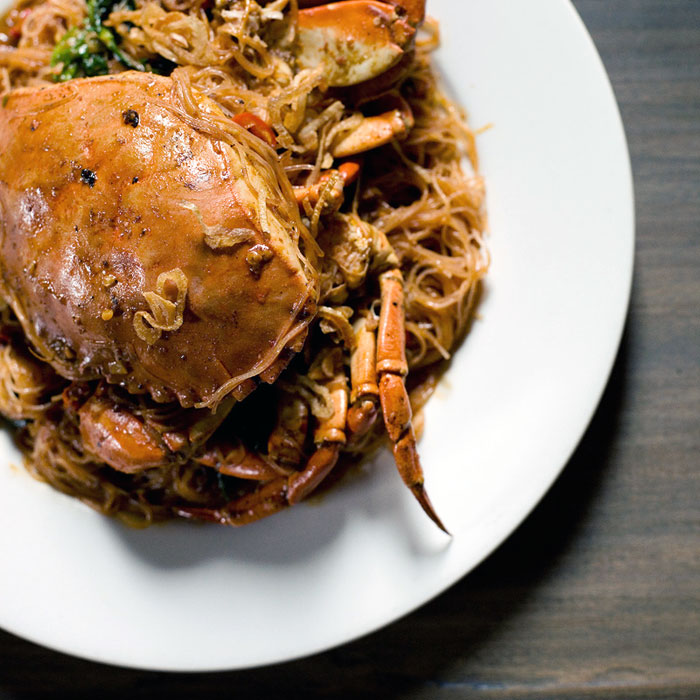
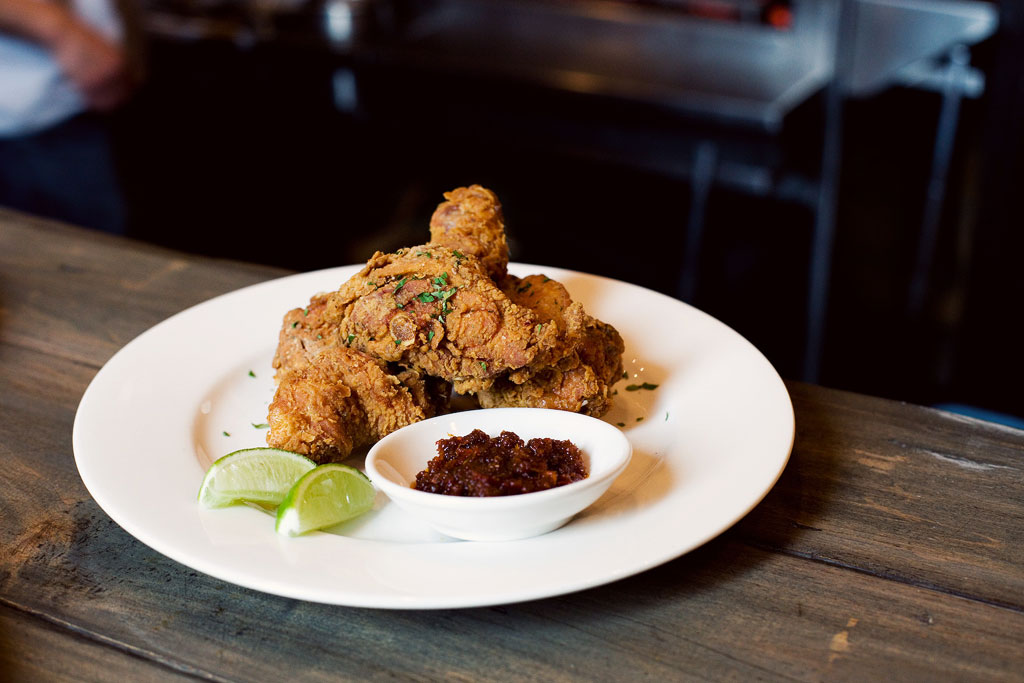
In Los Angeles’ Little Tokyo neighborhood, the red brick building that houses The Spice Table has become known as the go-to spot for the soulful flavors of Southeast Asia. With a menu highlighting some of his favorite dishes inspired by travels to Singapore and Vietnam, Chef Bryant Ng has cooked his way into the hearts his customers, critics and influential magazine editors. For Ng translation is more than words and language. It’s culture, food and flavor; Ng aims to capture travel experiences and bring them home.
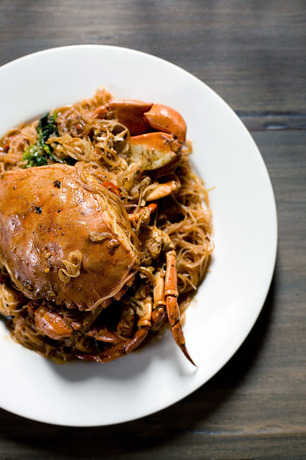
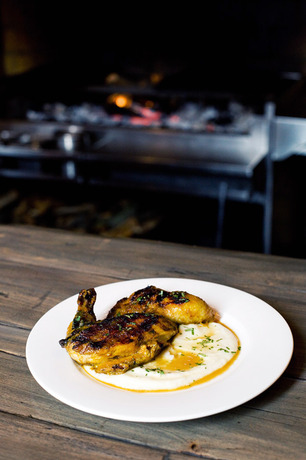
Ng’s culinary career includes stints in kitchens that turned out elegant French preparations and authentic Italian dishes. When it came time to open his own place the flavors of his family heritage in Singapore and his wife’s Vietnamese roots evolved into one of the most celebrated food stories in Los Angeles, including glowing review by Pulitzer winner Jonathan Gold and his being named one of Food & Wine’s Best New Chefs.
Later this Spring Ng’s adventures around the world and in the kitchen will come full circle in Singapore at the inaugural World Street Food Congress. Along with Anthony Bourdain, James Oseland and Jean-Georges Vongerichten Ng will join KF Seetoh on the council for the event in Singapore.
We stopped into The Spice Table mid-afternoon to find Ng stoking the fire at his customized grill setup—which includes a section designed specifically for making satay—to bring the perfect amount of smoke and char to his ribeyes, chickens, burgers and vegetables. While savoring the aromas from the grill, Ng shared his thoughts of the Street Food Congress, cooking and traveling through the streets of LA and the world.
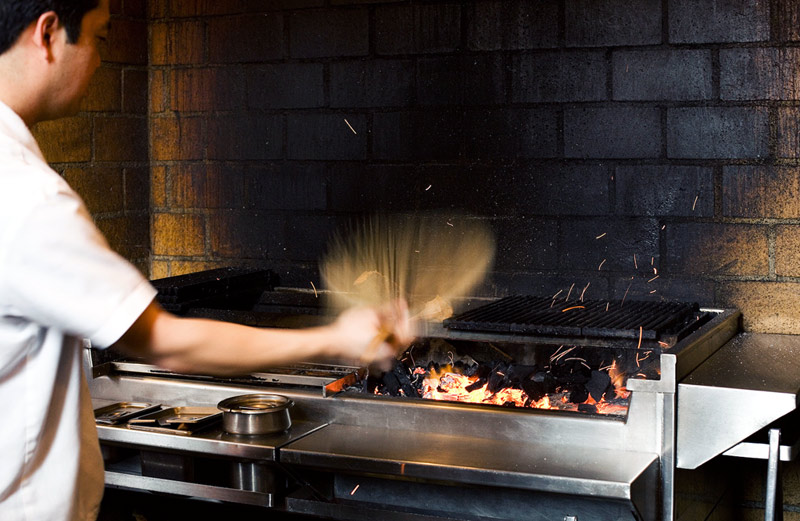
How did the idea to plan a street food congress come about?
I met Seetoh the last time I was in Singapore. He told me about the congress and asked if I wanted to be involved. It’s about preserving culinary heritage. We talked about how the children of hawkers are not becoming hawkers. They are going into medicine or finance which is great, but we are losing a very important part of Singaporean heritage, which is the food. So what will happen when the older generation stops cooking and retires? It could disappear.
What’s the strategy for preserving it?
We need to open that dialogue. We need to get hawkers and street food professionals and people who are in large companies and other chefs like myself or people who are media personalities like Anthony Bourdain to discuss ways we can maintain culinary heritage. We hope to create incentives for the younger generation to go into the field. Singapore is not chef-driven it is food-driven. You don’t know who is cooking the food—it is just auntie and uncle back there. How do you make cooking sexy? How do you make it lucrative? How do you create financial incentives? How do we get the younger generation to say, I really want to go into cooking.

How have your travels influenced your menu at The Spice Table?
I love cooking. For me it’s about experimenting—coming back from a trip and coming up with these dishes that I love to eat. I want to share some of that street flavor. One time we were in Saigon and we went to a northern Vietnamese restaurant that is known for grilled chicken feet. It was the most beautiful thing: they were perfectly cooked, perfectly charred. It had a sweet flavor to it that took in all that smoke. What he does every morning is splits the chicken feet in half so that they have more surface area. When they grill it, it is perfectly fanned out. The flavors were so simple, but so spot on. I took that idea and flavor profile and put it into a chicken entrée here. This particular dish is also inspired by Campanile restaurant. I worked there about eight years ago. Now that the restaurant is gone, this is my ode to Campanile. They served a crispy flattened chicken over mashed potatoes with garlic confit and arugula. It was so simple, but everybody loved it. I wanted to take the flavor profiles I had in Vietnam and translate it to this dish. I make it with lemongrass, shallots, garlic, honey, fish sauce and chilies.
How do you translate the experience of standing in a night market in Singapore eating something off of a piece of tin foil to your restaurant menu?
When I eat something in Singapore or Vietnam I am trying to understand more than the ingredients. I am trying to capture, what I am feeling when I am eating. I taste the flavors, but there is more to it. There is the smoke. There is the attention to detail. So how do I bring it here and really be able to execute it the way it should be and give it respect? To me it is capturing that soul. Trying to understand it as best I can and translating it to dishes I make here.
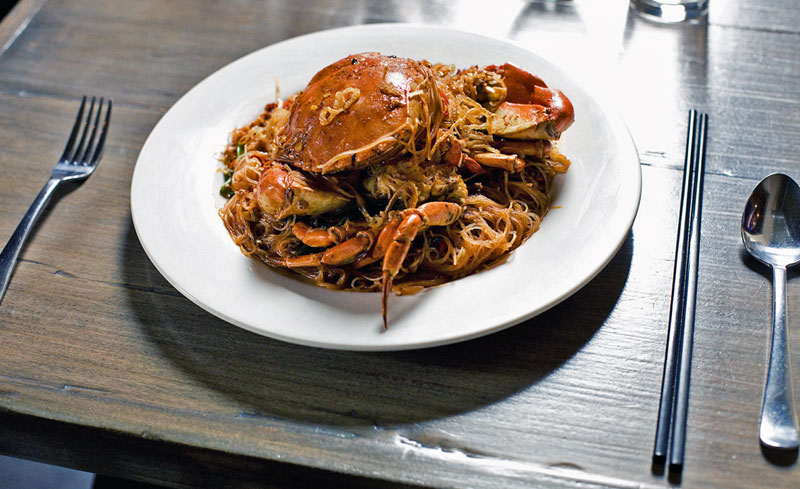
Do you consciously include menu items that are handheld, like your kaya toast and fried chicken, to capture that texture and tactile experience of eating street food?
Absolutely. And also like the dish the Salted Duck Egg Crab Bee Hoon. It’s a whole crab. You have to commit. You have to crack the crab. It’s going to be messy, but that’s part of it. When you are out of the street, you eat the food as it is. That’s part of the beauty of it. I ate a couple versions of Crab Bee Hoon in Singapore. I try to capture the nuances of the flavors.
Is this part of the reason for your grill being inside the dining space, for your diners to smell the smoke and see the char?
This grill is very much a statement. Our front door is right there. You walk in and immediately see the grill. To me it is a commitment to a craft and the way we cook which is vey traditional with wood and charcoal. You see that. You smell that. You feel it. There is a literal and figurative warmth to it.
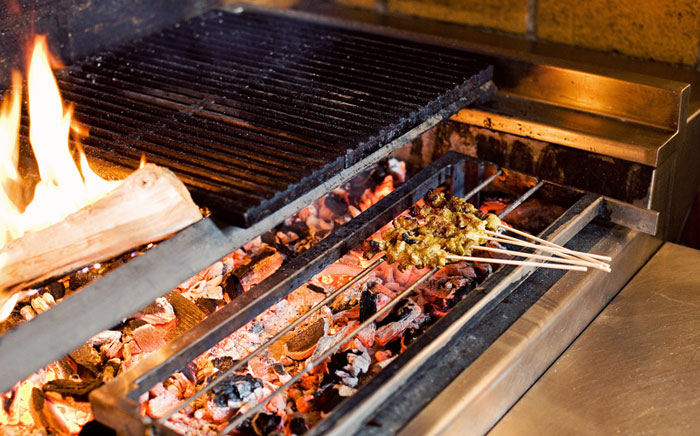
What were the modifications you made to this grill for it to be able to cook traditional satay?
If you look here there is a large gap between the coals and the cooking surface. We created this section to resemble those charcoal boxes you see all over Asia made for cooking grilled meats. The cooking surface is closer to the heat surface. What’s important is to get that char. You need it to caramelize to get the flavors to get in there. You need the smoke. I make lamb belly, chicken, beef and tripe satay. We’ve done sweetbreads.
Coming from a fine dining background at Mozza and Campanile, how does this environment, the grill in the middle, the brick walls and Vietnamese bird cages hanging from the ceiling tell your story?
Working in those places it was about learning good technique, learning how to cook and how kitchens and restaurants run and a good understanding of a professional kitchen. Here at The Spice Table it is about Southeast Asia. That is where my family is from. My mom is from Hong Kong. My dad’s side is from Singapore. My wife’s family is from Vietnam.
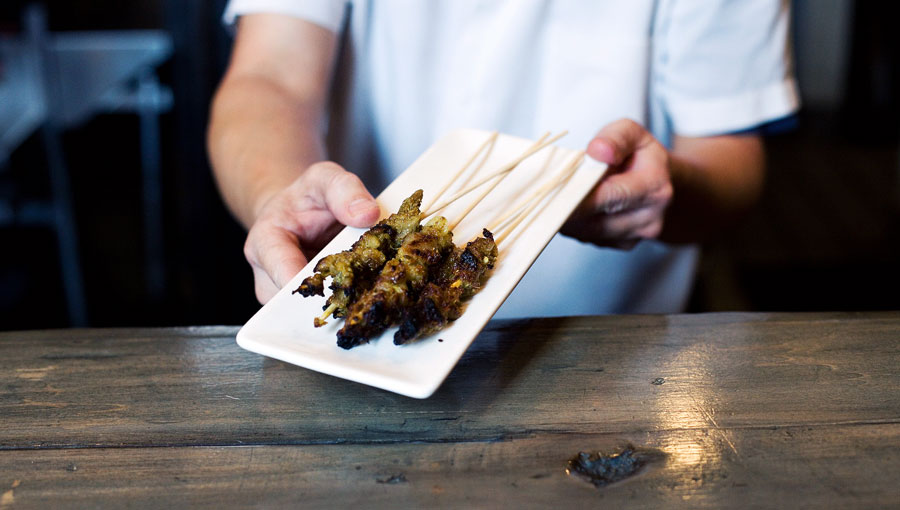
Besides Southeast Asia have you eaten street food in other countries? Can you share a food memory that sticks with you?
For my honeymoon we went to Paris, Barcelona and San Sebastian. The best thing we ate was this potato and leek pancake at a farmers market in Paris. A two Euro potato and leek pancake was better than any place we dined. That was the most memorable thing we ate. To this day that still inspires me. For me that was so simple, there was cheese in it, it was pan fried. It was beautiful. I think some of the best things are simple. We are a mom and pop shop. When people come in I want them to feel the heart and soul and love put into the food and service. Wherever we go I want to be able to capture that.
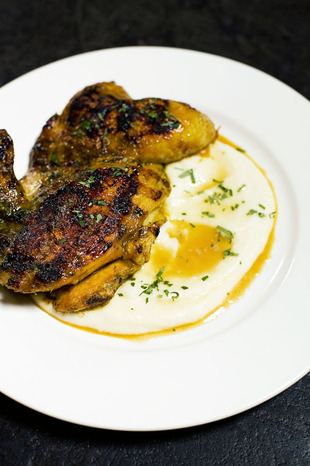
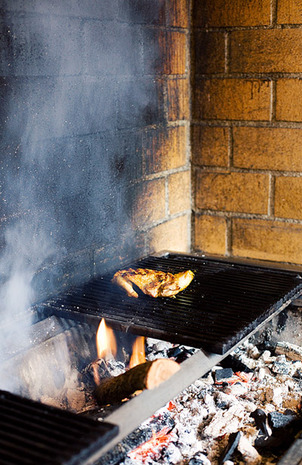
What inspires you to keep cooking?
My goals have changed. It has a lot to do with my conversations with Seetoh about the World Street Food Congress. When I opened The Spice Table it was simple—I just wanted to cook and have a restaurant to do the food that I wanted to do. Now I think more about how important it is to uphold this culinary heritage of Singapore. I want to go back there to learn more. I need to cook more and be somebody that can help carry the torch to uphold those traditions.
What are you most looking forward to during the conference?
I want to see what kind of impact this congress can have. We need it to be more than a feast with everyone patting ourselves on the back. If we truly want to make a difference then we have to make those connections, have a dialogue and make an action plan.
You can learn more about the World Street Food Congress on their website.
Images by Bonnie Tsang












